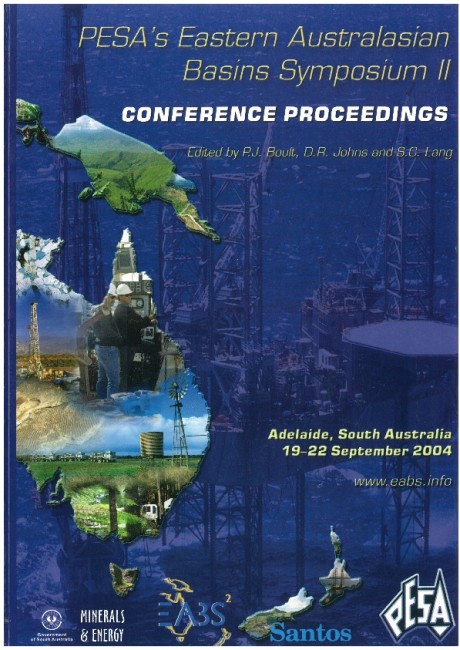Publication Name: PESA's Eastern Australasian Basin Symposium II
Authors: J. Underschultz and P. Boult
Date Published: December 2004
Number of Pages: 27
Reference Type: Book Section
Abstract:
The Gidgealpa Oil Field of the Eromanga Basin is characterised by stacked hydrocarbon accumulations where theprinciple control on column heights is considered to be variable top seal capacities. The Hutton Sandstone forms the main reservoir at Middle Jurassic level, with the overlying Birkhead Formation forming a waste zone and top seal to the reservoir. A palaeo-oil column in the Hutton reservoir indicates that the Birkhead seal was breached, allowing the free water level to rise to its present position. This leads to questions regarding the nature of the filling history for the poor quality lower Birkhead Formation sands.
Pressure and formation water chemistry data from wells in the Gidgealpa South Dome show that most of the Hutton Sandstone acts as one hydraulic unit. Some of the lower Birkhead fluvial and deltaic sands are likewise hydraulically connected to it, but most of the lower Birkhead Formation sands and some of the Hutton low-stand sands are presently isolated oil accumulations, with individual pressure signatures. This suggests that in many cases the intervening finer grained sediments remain water saturated.
At initial oil charge, the Hutton Sandstone reservoir and the coarser grained parts of the lower Birkhead formation that were in communication with the Hutton, began to accumulate oil. As the column grew, it successively overcame the seal capacity of the finer grained sediments that separate individual Birkhead reservoir sands. Seal breach must have occurred in localized areas leaving most of the non-reservoir rock water saturated. Subsequent burial and compaction resulted in most of the Birkhead sands becoming hydraulically reisolated, each taking on separate pressure characteristics.


